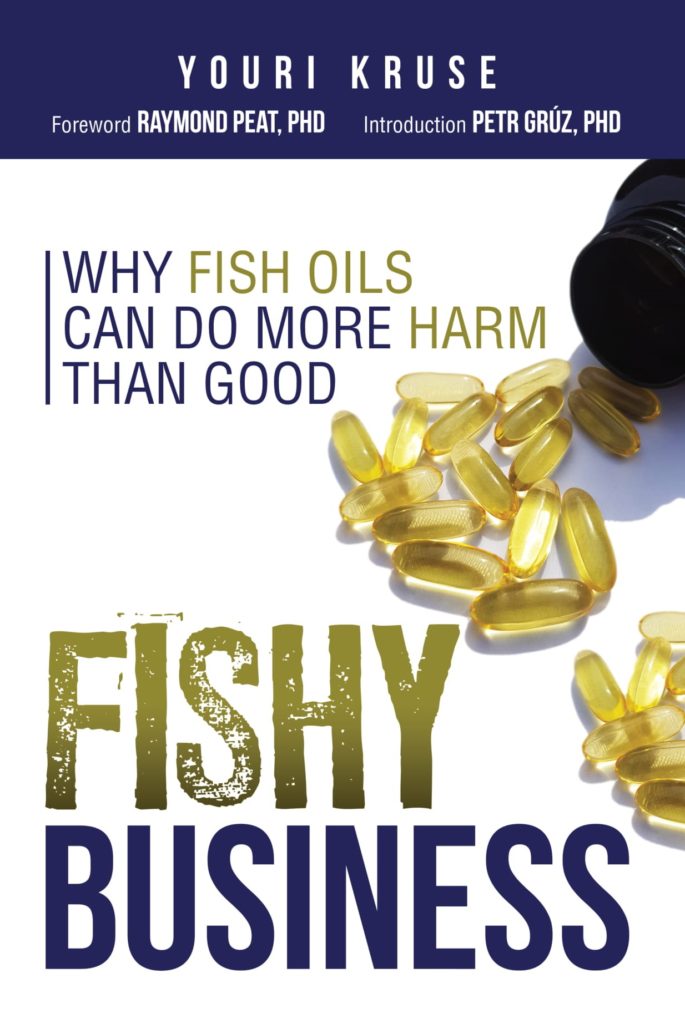As many studies are showing that the omega 3 fatty acids don’t really work, scientists had to change their story and found the holy omega 3 to omega 6 ratio. This idea has some truth to it, but it makes many situations worse. Let’s get started
Omega 3’s, together with omega 6, are seen as the essential fatty acids (EFA). The main reason why fish oils could be supplemented is to combat the enormous quantity of unsaturated vegetable oils (omega 6) that flooded the market after the Second World War. The increase in vegetable oil came about after the association was made between saturated fat and the increases in cholesterol. Vegetable oil is loaded with omega 6 and resulted in a significant discrepancy between intake of omega 3 and omega 6. Instead of correcting the initial problem of limiting unsaturated fats by restricting omega 6, increasing omega 3 can likely increase many of the existing problems.
The importance of the ratio of omega 3 to omega 6 is often suggested and has become a credo. Often this observation can be seen in a different light. When people with venous thromboembolism are compared with a control group a higher ratio of omega 6 to omega 3 is seen, but also a lower total PUFA content (controls have higher cholesterol). The same is observed for glaucoma, where fish oil is associated with a lower risk of glaucoma, the same association, however, can be made for lower PUFA intake ( again, cholesterol is slightly higher with the control group).
Examples of why the omega 3-omega 6 ratios may not be useful
- When the fish oils are supplemented to lower the ratio omega 6 to omega 3 from 31:1 to 5.4:1 to 1.4:1 in old dogs, it showed that the dogs displayed a reduced cell-mediated immune response, showed increase breakdown products of fats and a lowered vitamin E quantity[i].
- When mice are inserted with a gene to change omega 6 into omega 3 to increase the ratio between omega 6/ omega 3 and are compared to control and other groups that are lacking the gene. Results show when tested on non-alcohol fatty liver disease the omega 3 increased group had the highest liver damage and biggest increase in fat accumalation of all groups. These gene inserted mice had omega 3 to omega 6 ratio of about 1 to 1[ii].
- When broilers are sperated into 6 groups each on different diets that affects the ratio between omega 3 and omega 6, it was shown that higher omega 3 (while leaving total pufa the same) resulted in increased DNA damage and overall increased lipid peroxidation[iii].
- When overal pufa levels are higher, but are in a lower ratio it does not translate in health. Children with recently diagnosed diabetes and establsihed diabetes have higher omega 3 levels and lower omega 3 to omega 6 ratio than healthy controls[iv].
- If slightly more omega 3 (EPA) are given than omega 6 at a ratio of 1.24 to 1.0 (omega 3 to omega 6) and compared to diets consisting of omega 6 to omega 3, 9 to 1.0 and 7.6 to 1.0 in mice to access liver injury in paracetamol feeding. After examaning the livers of the 3 groups, it was found that the EPA group had the highest amount of liver injury and inflammatory gene respronds[v]
- When pregnant rats are fed an increased amount of omega 3 resulting in a ratio of omega 3 to omega 6 from 4.8 compared to 8.4 in the control group, the offspring shows increased total fat deposits and subcutaneous fat mass, while the control had normal fat levels[vi].
[i] J Nutr. 1997 Jun;127(6):1198-205. The ratio of dietary (n-6) to (n-3) fatty acids influences immune system function, eicosanoid metabolism, lipid peroxidation and vitamin E status in aged dogs. Wander RC1, Hall JA, Gradin JL, Du SH, Jewell DE.
[ii] Clinical Nutrition Experimental Volume 12, April 2017, Pages 37-49. Clinical Nutrition Experimental Deleterious effect of n-3 polyunsaturated fatty acids in non-alcoholic steatohepatitis in the fat-1 mouse model. DianaShefer, Weinberga Shlomo Sassonb Betty Schwartza NuritArgov-Argamanc Oren Tirosh.
[iii] The interactive effect of dietary n-6: n-3 fatty acid ratio and vitamin E level on tissue lipid peroxidation, DNA damage in intestinal epithelial cells, and gut morphology in chickens of different ages
[iv] Castro-Correia C, Sousa S, Norberto S, et al. The Fatty Acid Profile in Patients with Newly Diagnosed Diabetes: Why It Could Be Unsuspected. International Journal of Pediatrics. 2017;2017:6424186. doi:10.1155/2017/6424186.
[v] Original Article. Eicosapentaenoic acid attenuates hepatic accumulation of cholesterol esters but aggravates liver injury and inflammation in mice fed a cholate-supplemented high-fat diet
[vi] Muhlhausler BS, Miljkovic D, Fong L, Xian CJ, Duthoit E, Gibson RA. Maternal Omega-3 Supplementation Increases Fat Mass in Male and Female Rat Offspring. Frontiers in Genetics. 2011;2:48. doi:10.3389/fgene.2011.00048.
